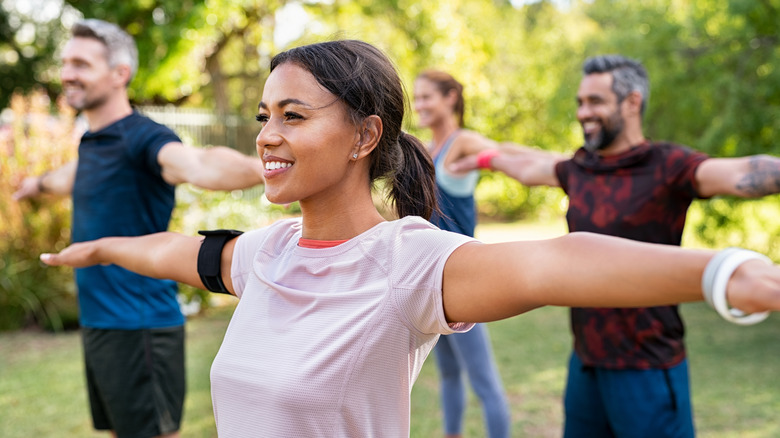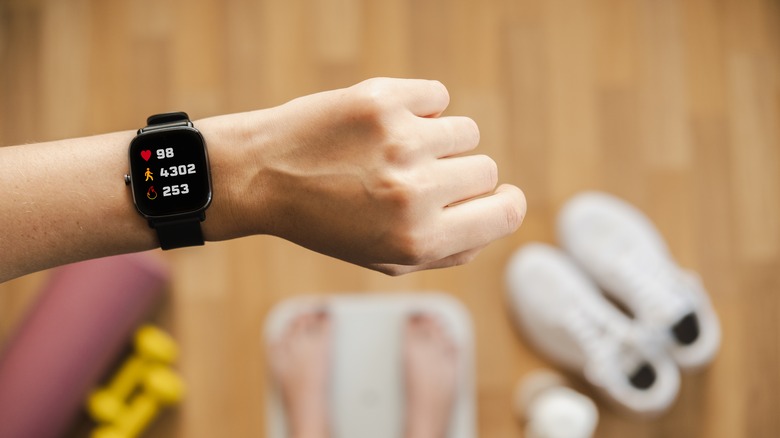Here's Why You Should Measure RPE At The Gym
The rate of perceived exertion (RPE) is a method of measuring the intensity of your exercise regimen. According to experts at Verywell Fit, RPE can help you measure how hard your body is working based on a number of physical sensations, including elevated heart rate, muscle fatigue, and increased breathing. These sensations correspond to numbers on a sliding scale, which helps determine the intensity level of your workout. Based on a scale of six to 20, with six being no exertion and 20 being the maximum effort, you can rate your perceived exertion by assigning a number to each workout or activity.
For instance, less intense exercise, like taking a leisurely walk, will typically correspond to an RPE of six to nine, while more moderate exercise will fall between 12 to 14 on the Borg RPE scale (per Verywell Fit). You can multiply your RPE by 10 to get your estimated heart rate. For example, if your RPE is 12, your estimated heart rate is 120 beats per minute. However, the Borg scale isn't the only system of measurement that can help determine your RPE. There's also a modified RPE scale, which uses a typical range of one to 10. But you won't be able to use this scale to get your estimated heart rate.
Benefits and shortcomings of RPE
Regardless of which scale you use, calculating your RPE can help you avoid burnout. According to Shape, relying on physical sensations instead of fitness trackers can help prevent you from expending all your energy within the first 10 minutes of your workout session. "RPE's fluid approach to training intensity makes it easy to shift gears and keep pushing in the gym without being stuck to a rigid system," Katie Fogelson, a MIRROR trainer and lululemon ambassador, told Shape. "No matter how fancy your fitness tracking device may be, it can't tell you how you feel."
However, this isn't always accurate either. In fact, it's not uncommon for people to overestimate their level of exertion, especially if they're not used to working out. In order to increase the accuracy of this method, you need to be in tune with your body. This means knowing how your body usually reacts to easy or moderate exercise versus high-intensity activity (via Shape).


